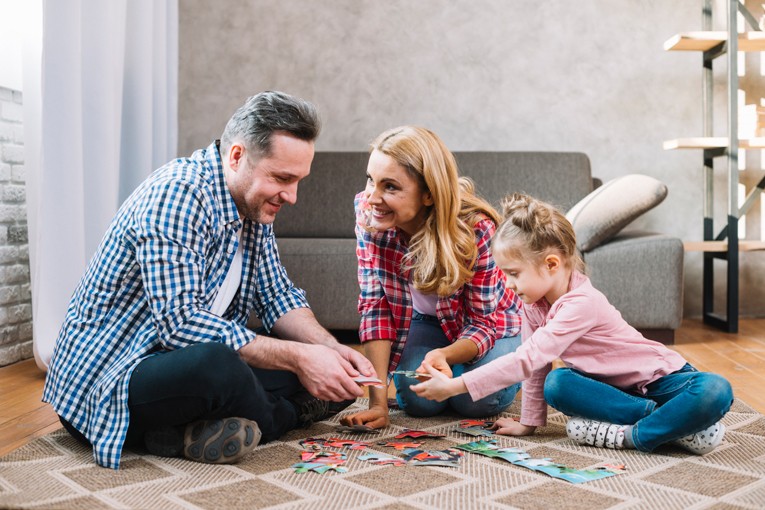
The puzzle, which is very popular around the world, has entered our language as jigsaw. Puzzle, which is a kind of puzzle game to try to solve the unknown, consists of many pieces.

A puzzle based on combining the right pieces to bring together a complete image; It consists of different images, sizes and numbers of pieces. You won’t want to give up this fun activity, which may seem difficult at first, but when it becomes a hobby and is done constantly, it turns into an addiction. You can enjoy this fun activity alone or with your loved ones.
Puzzle History
The puzzle, which some people see as a no-brainer and some see as a meditation; It was actually discovered completely by chance in 1760 by John Spilsbury, an engraving and mapping expert. Discovering that this could be a way of learning while studying the country borders on the map, Spilsbury led to the start of a game that is both educational and entertaining. Today, it resembles vast oceans in terms of their diversity. puzzleIt has become the subject of many research studies and has been determined to help people improve their skills in developing solutions.
Benefits of Making Puzzles
- We can say that puzzle making, which produces beautiful pictures and paintings when completed, contributes greatly to both the mind and body.
- First of all, puzzles are a hobby that requires a lot of patience. This is especially true for puzzle types that have a large number of pieces. Efforts to combine small pieces effectively while putting together a big picture will teach you very good lessons about both responsibility and patience.
- Here, imagining the next step while assembling the puzzle pieces will enable both the right and left brain to work at the same time. Because the right brain, which deals with creative tasks, and the left brain, which handles analytical issues, must work together so that they can see the whole picture.
- Another benefit is that the time you spend constantly thinking and trying to remember the location of the pieces is known to be very helpful in preventing diseases such as Alzheimer’s and dementia. Doing puzzles would be a solution worth trying for people who have forgetfulness problems.
- Making puzzles is quite fun; It helps you calm down, regulates your heartbeat and breathing, and helps you use it when decorating your home by creating paintings that suit your taste.
How to Make a Puzzle and What Are the Tips?
The puzzle is actually a passionate journey where you move towards placing the last piece from the moment you pick up that first piece. There are some points to consider here. First of all, if you are a beginner in puzzle making, it will be beneficial for you to choose a model with fewer pieces and less visual complexity, instead of choosing a model with too many pieces. The tricks of making puzzles are;
- It is important for beginners to pay attention to the length measurements written on the puzzle boxes. Because even though it seems to be in small pieces, the dimensions may be larger than you expect.
- Afterwards, we recommend that you separate the colors when starting the puzzle. Many puzzles consist of certain primary colors and their shades. Paying attention to sharp and faint transitions between color tones and making the distinction accordingly will make your job easier.
- Choosing the corner and edge pieces and placing these pieces first will make your job easier. You can fill the middle parts more easily by getting help from the patterns and colors on the edges.
- If separating colors did not help you as much as you wanted, you can also organize each color group you separated by part shape. If the puzzle you choose consists of solid colored sections, this method will be very useful.
- Since each puzzle has its own shape, it must proceed in a geometrically systematic logic. Separating the pieces will help you figure out this system.
Apart from these suggestions, you should not forget that puzzle making is a learned process and you will improve with your own methods after each puzzle you do. If you say that two-dimensional puzzles are not enough for you and you want a three-dimensional challenge, three-dimensional puzzles are for you. If you want to have a shape you like or the symbol of a city you love in the middle of your home, these types of puzzle experiments will make you very happy.
Interesting Facts About Puzzle
There is information you may have never heard about the puzzle that almost everyone has at home and has tried to do at least once. Some of those:
- During handmade wooden puzzle making, a highly skilled craftsman can cut 100 pieces per hour, but the normal rate for this job is 25-50 pieces per hour.
- In history, the first puzzles were cut with the saw used in furniture making, and later, with the invention of the pedal saw, they began to be called “jigsaw puzzles”.
- Springbok is the famous American company that claims to have produced the first and hardest puzzle in the world. For those wondering about the name of this difficult puzzle: “Convergence”
- The world’s largest puzzle, currently registered in the Guinness Book of Records, is 5.5 meters long and 2 meters wide. The artist of this puzzle, whose packaged box weighs 17 kg, is the famous graffiti painter Keith Haring’s “Double Retrospect”. The puzzle is created by combining 32 different pictures.
- The best-selling puzzle in the world is the painting adapted from Van Gogh’s painting Terrasse de Cafe.
Puzzle is a very entertaining activity that stimulates the brain to think and allows you to have a pleasant time with your loved ones.

